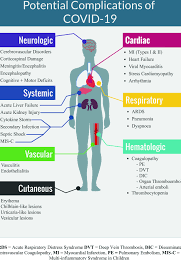Singapore adopts a cautious approach as air travel with China resumes, balancing public health and travel needs.
SINGAPORE: On Friday (Dec 30), the Ministry of Health (MOH) announced that Singapore is prepared to enhance border health measures if necessary, as it continues to closely monitor the evolving global COVID-19 situation.
In a recent press release, the ministry acknowledged public concerns regarding the high infection rates in China and the country’s decision to ease its border restrictions starting January 8. “While many nations have lifted public health-related border measures, Singapore has opted to maintain certain precautions,” stated MOH, specifically regarding unvaccinated individuals entering the country.
These measures are designed to mitigate the risk of severely ill imported cases, which could strain Singapore’s healthcare capacity. “For now, we will keep the current vaccination requirements and border measures for non-fully vaccinated travelers in place,” the ministry confirmed.
The MOH indicated that it is “watching the situation closely,” taking into account both “upstream developments” and the pressures on Singapore’s healthcare system. “We stand ready to reinstate border health measures for specific countries if warranted by public health conditions,” the ministry emphasized.
Concerns Regarding Variants and Hospital Capacities
The MOH pointed out that the key factor at this stage in the pandemic is the immunity of Singapore’s population. “While we cannot completely eliminate infections, we can ensure that most cases do not lead to hospitalizations or severe illnesses,” the ministry noted.
Despite a stable local epidemiological situation following the XBB variant wave, Singapore remains vigilant about potential global developments. The MOH expressed concerns regarding the emergence of new and more dangerous variants. To address this, Singapore collaborates with international partners for monitoring while conducting its own genomic surveillance of both local and imported cases.
Based on genomic sequencing from various cities in China, the ministry reported that the strains currently circulating there are well-known, with no newly identified variants exhibiting increased transmissibility or severity compared to previously recognized subvariants.
A second concern is the potential for incoming travelers to add an undue burden to Singapore’s healthcare system. Currently, Singapore’s airport sees between 700 and 1,000 arrivals from China daily, making up about 1% to 1.5% of total daily air traffic. Most arrivals consist of residents and long-term pass holders returning home.
Weekly reports indicate that between 40 and 80 COVID-19 cases are detected among these travelers, most presenting mild symptoms. However, there was one severe case involving a Singaporean who fell ill after recent travel to China.
“As we gradually restore air travel with China, we will proceed cautiously with increasing flight capacities, carefully considering the overall public health assessment,” stated the MOH.
Earlier this month, China announced a nationwide easing of its stringent COVID-19 restrictions, which had led to unprecedented protests across several cities. The National Health Commission’s recent measures included the removal of limits on international flights and the resumption of outbound travel for citizens in an “orderly” manner, signaling a significant shift in China’s approach to managing COVID-19.
As of noon on Dec 30, Singapore has recorded a total of 2,201,379 COVID-19 cases and 1,711 deaths. The seven-day moving average for local cases stands at 724, with four COVID-19-related patients currently in the Intensive Care Unit (ICU).








